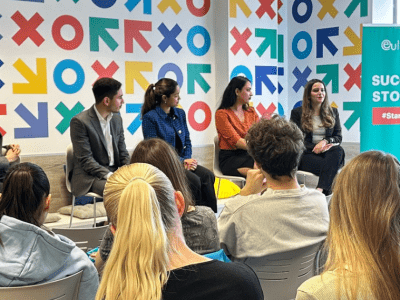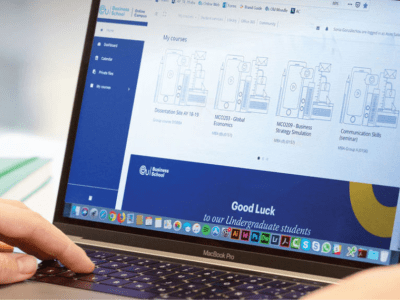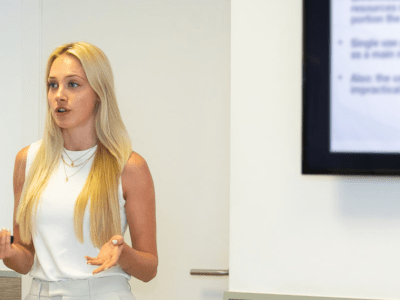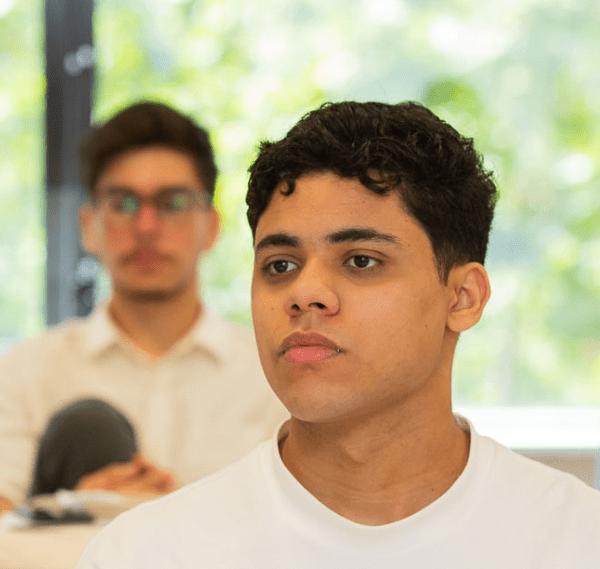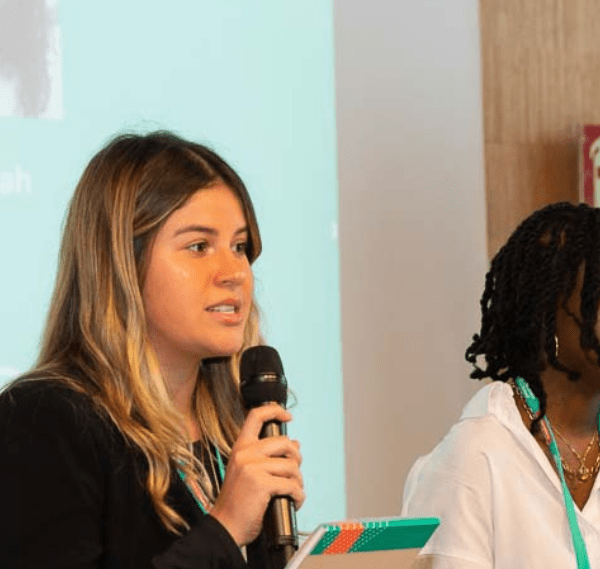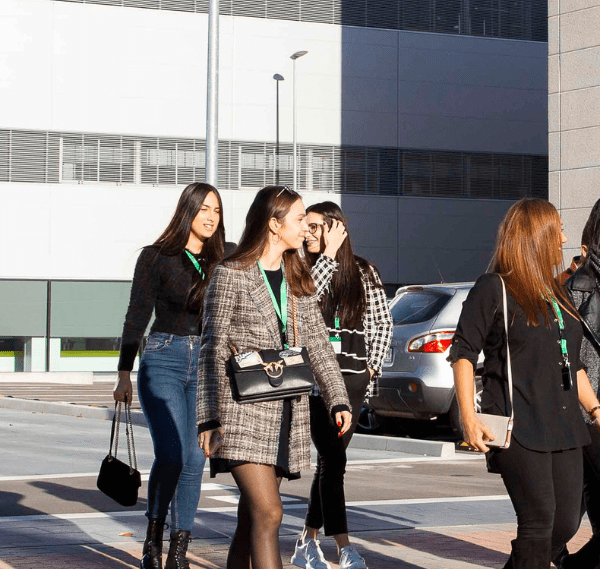Anna-Lena Höcker, a self-employed consultant, e-book author and experienced designer, provided an insight to EU Business School students into the fundamentals of design thinking and how these strategies can be harnessed for careers in all industries.
Design Thinking and Its Applications
Design thinking is usually used to improve the human experience through products and services. However, Anna-Lena believes that the underlying philosophies of this methodology can be applied to our own lives too. This approach combines unconventional and analytical approaches with operational excellence and design capabilities.
Anna-Lena stated that her objective with the presentation was to inspire students to have fun and be imaginative as they design their own career trajectory. To her, success means being able to do what you love and express yourself with freedom.
She has built her own career as a consultant which includes providing training and team building activities to businesses as well as presentation and service design. She explained that she crafted her unique role using her own individual passions and experience, and she hoped to help EU Business School students do the same.
One particularly important element of her approach was to value and include hobbies in the sphere of work. She knows their worth from experience. The pursuit of her artistic hobbies has enabled her to provide more memorable and distinct services to clients as she is able to sketch her ideas for them in real time.
Anna-Lena spoke at depth about challenging the boundaries and binaries that we impose on our thinking and our lives during this presentation.
Do Your Research
When designing a product or service, it is crucial to understand the context in which a customer or employee acts or interacts with. This is the starting point for design work. Ideas should not be generated on the basis of assumptions, but instead on solid evidence. Thorough research is required, and Anna-Lena suggested that students adopt the same approach to their careers.
Researching industries of interest is one way to do this. She suggested that students could find data that others have collected on the topic, and they could also undertake their own research by conducting interviews. Interestingly, they should also perform research on themselves. They most certainly shouldn’t make assumptions about their passions or potential.
How can someone research their own personality? They can draw out mind-maps that show what they have done so far. They can list what they know and what their capabilities are and then categorize the results to find common threads. Anna-Lena even suggested students translate data about themselves into a sketch, in order to activate different parts of the brain during the process.
To get a 360-degree picture of yourself, Anna-Lena believes it is vitally important to talk to other people as part of your research. That means choosing trusted people and asking them to describe your strengths and capabilities.
An advantage of this is that you’ll likely be surprised by answers you hadn’t previously considered. This is an opportunity to ask probing questions about and take notes about yourself. To start off, ask yourself questions such as “what do I know? What do I do? What am I interested in?”
Understand and Visualize the Data
Once data has been collected from the research process, it hereafter must be sorted and moved into information, and then finally, knowledge. The data must be synthesized, properly understood and displayed.
This isn’t always a tangible process: you have to put in the mental work to see how the data links and relates. For example, if you noted that you love to play chess, and your external source observed that you make decisions carefully, you can deduce that you’re a thoughtful, attentive person.
As you collect the information, you may start sorting it into categories. It’s helpful to put it down on a piece of paper or a whiteboard. You have creative freedom, but the idea is to express the data through visual language.
Anna-Lena believes that this is important as the mind responds to images in a different way than it responds to words. People are able to quickly memorize and grasp images in a way that they are simply not equipped for when it comes to written texts.
By making a visual representation of the information you have gathered about yourself and your career thus far, you will then be able to literally see “the full picture.” It may be easier to understand how details relate to one another.
For this reason, Anna-Lena suggested to students that they try to incorporate a visual element to their personal CV as well. The goal is to always make your message as easy as possible for your audience to process.
The Iteration Stage
When turning your data into an output like a CV, Anna-Lena recommends that the first step you should take should be creating a quick prototype that you can show to an audience and then receive feedback. This will empower you to make improvements before committing to a final product.
Showing an imperfect first version may trigger anxiety. However, useful feedback will ensure that the final product has the most value possible. Design thinking requires opening up your creative process to others.
Anna-Lena reminded students that the feedback they choose to absorb and to ignore is entirely up to them. Not all feedback is equally valuable, and not everyone will understand your concept enough to make a useful contribution.
However, it is possible to design the feedback process so that it best benefits you; for example, by asking for “something positive, something negative and an opportunity.”
This process has the additional advantage of strengthening your resilience as a professional: you learn how to accept feedback and not take constructive criticism too personally.
An Attitude of Inspiration
To apply design thinking into everyday life, you must constantly seek inspiration. To Anna-Lena, this is a way of life. The idea is to be constantly searching for ways to create meaningful output both for yourself and your environment. The traits required are curiosity, open-mindedness and empathy, and these traits can be developed and nurtured over time, according to Anna-Lena.
A good start is to find out what you’re passionate about and look for opportunities to do unexpected things in relation to it. Anna-Lena explained that, in a busy business landscape, you get people’s attention when you do something out of the ordinary. This also helps you shape your story. Interesting people interest others.
In modern-day life, there is a pervasive idea that you should constantly be engaged in work of some kind. Anna-Lena encouraged students to broaden their concept of work. Science shows that the pursuit of hobbies and immersion in recreational activities boosts creativity, resilience and productivity.
Even when you take a break from work, your brain is processing and problem-solving. Breakthroughs may come at unexpected moments. There are also important skills that can be refined through hobbies; for example, many games promote strategical thinking.
For these reasons, Anna-Lena emphasizes that hobbies are not a waste of time, but rather they are actually an investment in yourself, and they can enrich your work.




